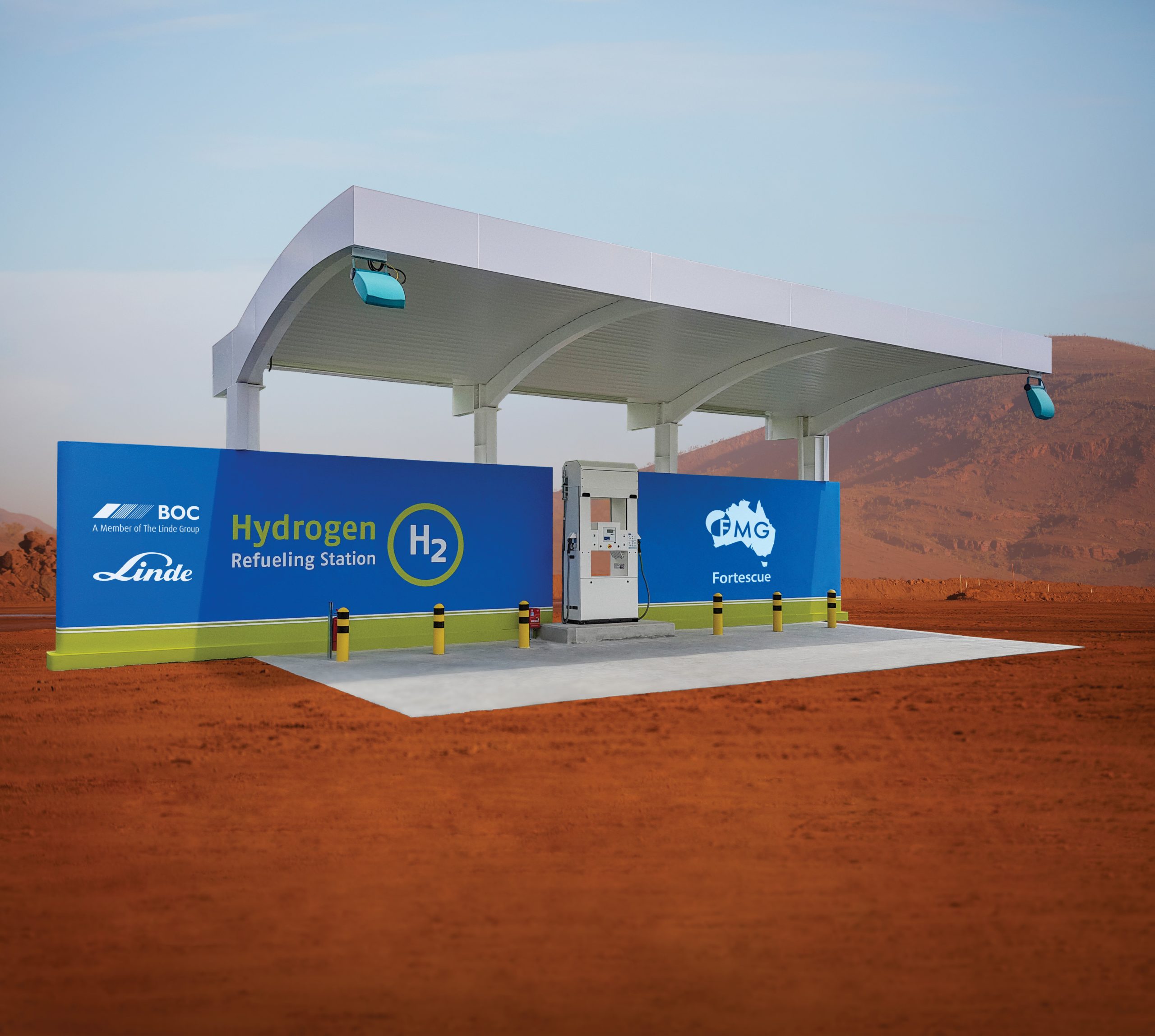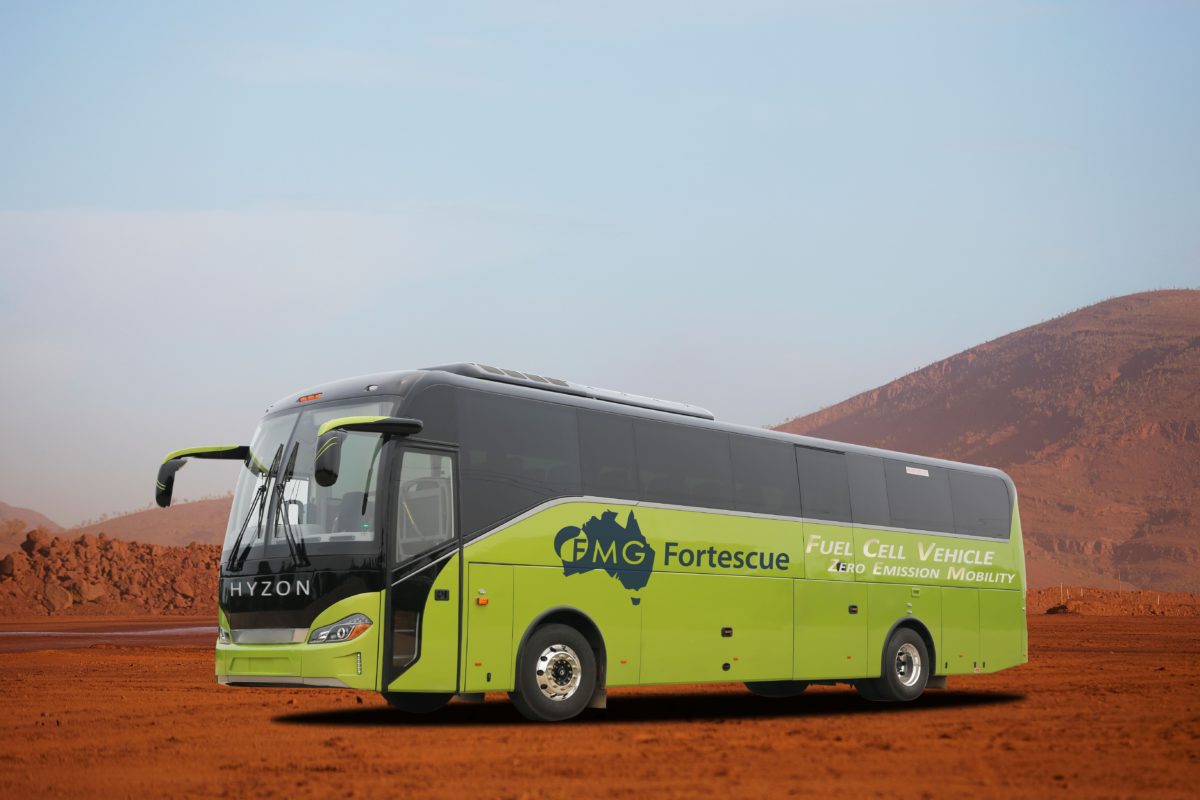As part of the $32 million project BOC will install renewable-powered electrolysers and establish a hydrogen refuelling station at the Western Australia site, allowing Fortescue to replace its fleet of diesel-fuelled buses with hydrogen-fuelled coaches.
BOC announced on Thursday it will supply two electrolysers sourced from British firm ITM which will produce up to 180 kg of hydrogen per day on site. The electrolysers will be supplied with power from the 60 MW Chichester Solar Gas Hybrid Project which is being constructed nearby.
A hydrogen refuelling station, produced by BOC parent company Linde, will also be established at the site to provide for the fleet of 10 hydrogen-fuelled buses which will transport 3,000 workers to and from the mine site every day.
BOC South Pacific managing director John Evans said the project will demonstrate BOC’s expertise in customised hydrogen solutions to suit the most challenging environments.
“BOC is proud to be the chosen partner in this exciting project that will demonstrate how renewable hydrogen can be used as a fuel for heavy vehicles in remote environments,” he said.
“Mining is a 24/7 operation which, together with the remoteness of the site means that reliability is essential. BOC provided a solution that recognised the criticality of the application and we collaborated with Fortescue to design an application to protect the electrolyser and refueller from the environment in the Pilbara region.
The Christmas Creek mine is the first mining operation in Australia to deploy hydrogen for transport and transition from diesel engines.
“The renewable hydrogen we will produce will help to reduce reliance on diesel for remotely located industries and therefore, add environmental value to our industrial customers,” Evans said.
“We look forward to working with Fortescue and our other partners to expand the use of hydrogen in heavy transport and remote applications – which are key priorities outlined in the Western Australian Renewable Hydrogen Strategy.”
Fortescue deputy chief executive officer Julie Shuttleworth said the project is the latest in the company’s drivetowards achieving net zero carbon emissions.
“This project represents a first step towards decarbonising our mobile fleet, which is an important part of our goal to achieve net zero operational emissions by 2040,” she said.
“As a significant energy consumer, we are actively pursuing opportunities to reduce our carbon footprint and cost base and we expect hydrogen to play a key role.

Photo: BOC
“Fortescue’s mobile fleet represents around 400 to 450 million litres of diesel consumption per year and presents a significant opportunity for hydrogen to be used as a replacement fuel source to accelerate emissions reduction and diversify our energy mix.
Fortescue has received $2 million in funding through the Western Australian Government’s Renewable Hydrogen Fund to support the development of this project.
The installation of the hydrogen supply and refuelling facilities is expected to be completed by early 2022.
The 60 MW Chichester solar farm, which is being built about 5km from the Christmas Creek mine, is expected to be completed in the first half of 2021.
This content is protected by copyright and may not be reused. If you want to cooperate with us and would like to reuse some of our content, please contact: editors@pv-magazine.com.









Note this is a solar + gas generating system and there is also a nice government handout. Hydrogen will give these buses a 20% generated electric energy to motion energy efficiency. Batteries powered buses would be 80% efficient. It would be interesting to know why hydrogen power was chosen.